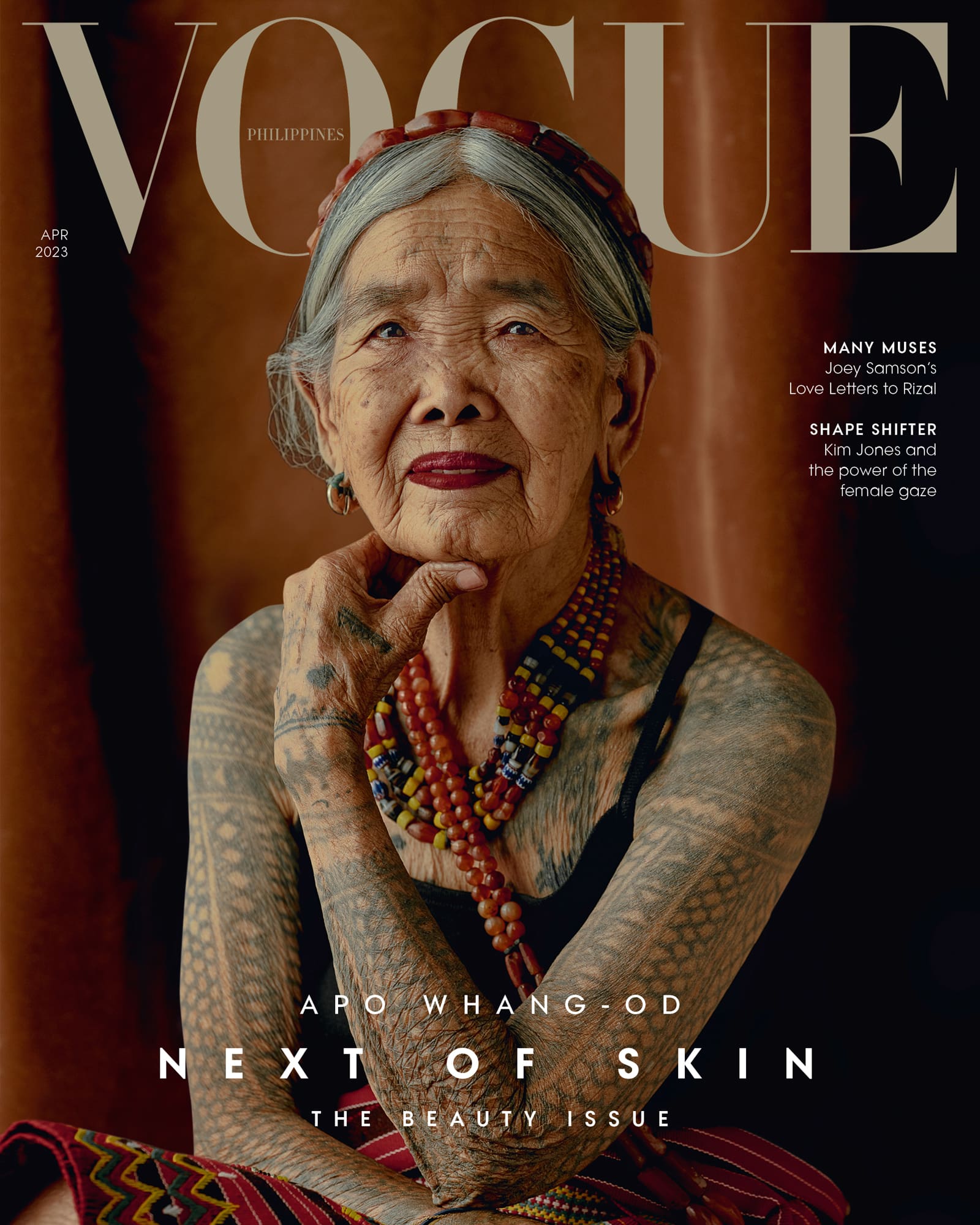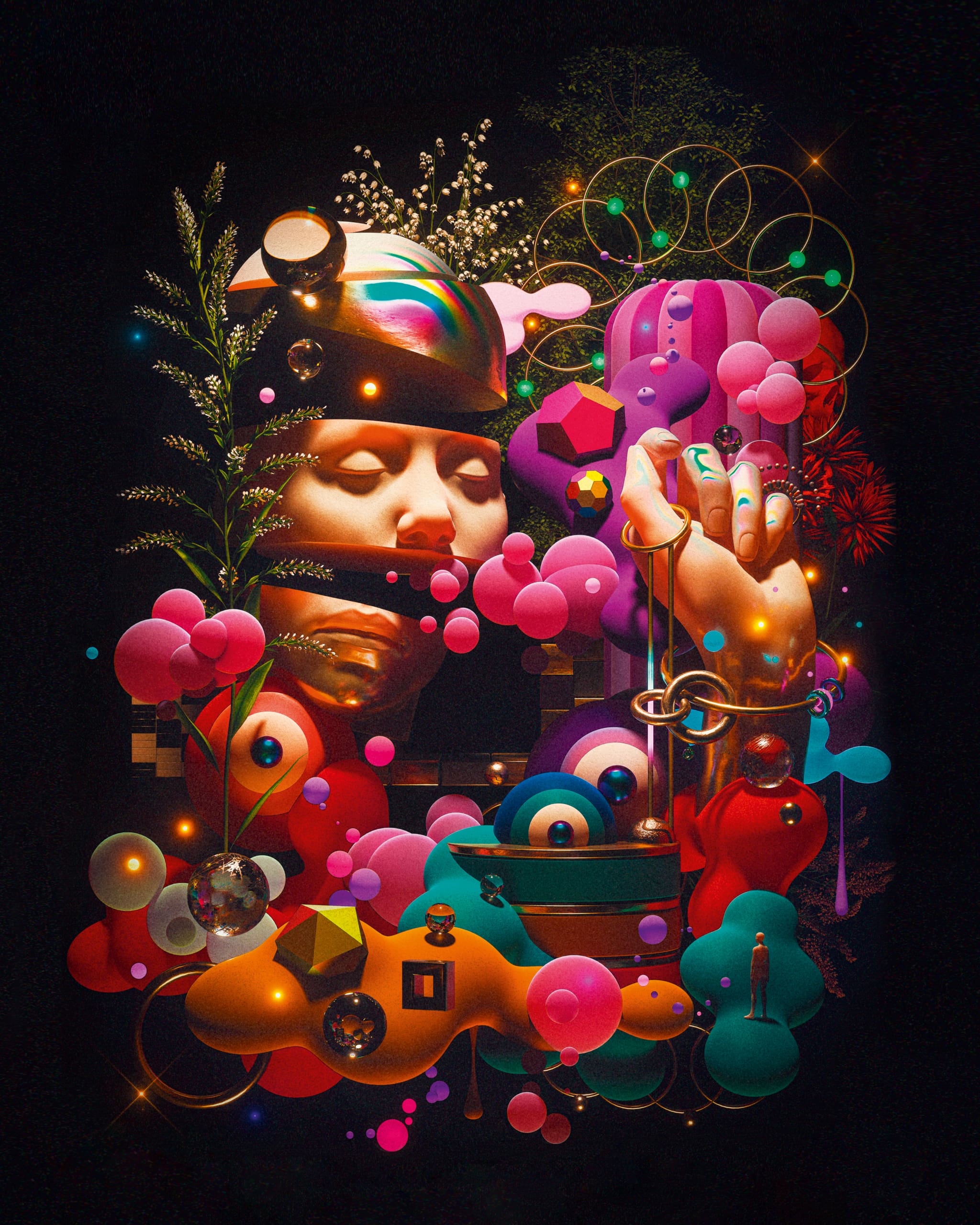As real world beauty dabbles in virtuality, new debates and discussions arise.
As far as social platforms go, we find ourselves in an interregnum. Those turning away from “traditional” social media by deactivating their Twitter accounts or making their Instagrams private are in no rush towards the next big thing. To some, the Metaverse stands for a lively, expansive realm encompassing everything from Roblox to Pokémon Go, containing infinite possibilities for fantasy. To many others, it’s a distant, off-putting sphere. Most of the world still lacks the connectivity—or will—to make VR feasible.
Click into the wrong corner of crypto-powered Decentraland or Facebook-owned Horizons World and you may well find yourself in a ghost town, where a handful of avatars roams a glitchy activation, long abandoned by its parent company. According to the Wall Street Journal, only nine percent of virtual venues hosted on Horizon Worlds are visited by more than 50 users, and many choose not to return at all after a month on the platform.
That hasn’t stopped beauty brands from giving it a go, with legacy players from Estée Lauder to Nars planting their stake in the virtual ground with surreal settings that include city-sized cosmetic bottles, heavenly skyscapes, or cyberpunk boudoirs.
But for those less virtually-inclined, augmented reality—where digital materials, such as face filters or 3D objects, are layered onto the physical world using your phone’s camera—may prove the more useful technology. This year, Google appealed to beauty shoppers by integrating a foundation shade-matching tool with its search function, solving a perennial problem for 60 percent of consumers who have decided against purchasing cosmetics online because they didn’t know what color to choose. Shiseido, Skinmatch, and Coralai deploy AI and AR to similar ends, with the latter presenting users with a comprehensive skin diagnostic and compatible product recommendations. It is a boon for anyone who’s tried to tame the mysterious biome of their own face without guidance.
Throughout 2022, #MetaMakeup and #AIGoddess trended on Xiaohongshu, where “virtual idol beauty” emerged as the next unattainable standard. From Ranmai Technology’s Ayayi, to the AI-powered Ling 翎, or the virtual K-pop group K/DA, virtual idols have become widely popular across the global entertainment industry. From a commercial point of view, these idols reduce risk, invulnerable as they are to illness, ego, or controversy.
But their broad appeal is much more complex: an “AIdol,” as the artist Lawrence Lek explores in his feature-length CGI film, is only the latest iteration of our tightly-engineered celebrity culture, appealing to both a futuristic zeitgeist and industries that depend on luxury and inaccessibility to stoke desire. The fact that any one of us can pull up YouTube to learn backstage beauty techniques has elites reaching for ever-more extreme treatments to set themselves apart.
One only need to compare today’s celebrity pictures to press shots from two decades ago to see how much cosmetic procedures, post-production editing, and innovative makeup artistry have become the norm, even for budding influencers on shoestring budgets.
In “virtual idol beauty,” iridescent skin, chromatic colors, and otherworldly eyeliner are combined with in-app filters and editing tools to make real people look, well, unreal. Makeup artists like Zoe Kim Kenealy and Valentina Li have gained thousands-strong followings for experimental looks that resemble face filters. In Li’s handiwork, unreal augmentations (like luminous jelly eyelash extensions or encrustations of glittering jewels at the browbone) test the limits of facial artistry.
Her development of the “Alien Barbie” face filter, in collaboration with model and artist Cui Aihui, translates a labor-intensive look (huge anime eyes, comprised of cosmetic crystals adhered by Li onto a model’s face over the course of three hours) into something instantly wearable.
And though Kenealy’s viral “sad girl” makeup features the wet lashes, puffy lips, and rubbed-raw nose that result from hysterical sobbing, the look’s polished skin and exaggerated features is more of a nod to popular crying-effect filters on Tiktok and Instagram than to any “real” upswell of emotion.
For next-generation beauty brands, pursuing the ethereal marks a pendulum swing back from the Glossier paradigm of “you, but better” and a beauty landscape dictated by health and wellness. Simi Haze, the beauty brand founded by identical twins Sama and Haya Khadra, sells pre-shaped “angel” eye crystals and CGI-effect highlighter. American brand BakeUp goes further with blended integration, offering physical products like a shimmering “eye veil” that have equivalents in augmented reality, as face-filters, and virtual reality, as avatar-compatible wearables.
Where overall trends toward “bad beauty” channel hedonism, excess, and play, “unreal beauty” takes as its inspiration the clean, frictionless, and algorithmically-sorted experiences of the digital world. It’s more about creating recognizable characters or high-impact effects than it is about expressing one’s innermost feelings. It is closer to the wide eyes and perpetual blush of e-girls, as spotted at last year’s GIRLGAMER esports event sponsored by Charlotte Tilbury, than the slept-in eyeliner and clumped-up mascara of indie darling Beabadobee, whose crunchy, heartfelt love songs speak to a competing desire for realness in an overwhelmingly smooth world.
While real-world beauty departs from reality, a devoted few are looking to bring more true-to-life representations into virtuality. For every cosplayer who succeeds at emulating their in-game avatar, there are many more gamers left out of the industry’s narrow definition of female beauty. A survey conducted by Dove found that 74 percent of girls wish the characters in video games looked more like women in real life, while 60 percent said they felt misrepresented in games altogether. Video games (like TV and cinema) are important loci for self-recognition.
Among the 1.3 billion women and girls who regularly play games, 60 percent started gaming before turning 13, and encountering characters that positively reflect one’s background and experiences can be indisputably formative. Dove’s “Real Virtual Beauty” campaign aims to correct an industry so often dominated by patriarchal norms, collaborating with the game development tool Unreal Engine to train up developers and artists in representing “real beauty” in their character design.
Since the advent of the “Instagram face,” a term coined by New Yorker staff writer Jia Tolentino to describe the sculpted and filled-in facial aesthetic popularised by IG influencers, we have accepted that digital augmentation shapes real-world beauty standards, and vice versa. Such acceptance is not without discomfort.
For the very online, debates around beauty seem to ping-pong between the “clean girls,” who take a virtuous approach to wellness and their appearance, and the cyborgs, who see natural beauty as a fragile illusion, and one that can uphold an exclusionary status quo. Either way, the collective turn toward unreal aesthetics opens up space to discuss the beauty standards at face value. Who is to say what’s unnatural, when so much depends on artifice?

Get your copy at shop.vogue.ph
